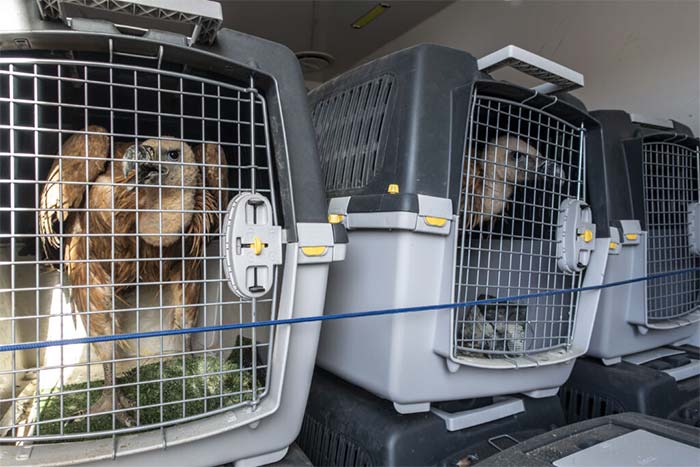Sardinia Griffon Vultures population welcomes 30 new individuals
by VCF

In a remarkable international effort, 30 young Griffon Vultures recently arrived in Sardinia, within the LIFE Safe for Vultures project. 25 come from the Amus centre in Extremadura; 3 are from the Netherlands and 2 from the Czech Republic. This is the largest contingent of Griffon Vultures transported within the project, showcasing the potential of international collaboration in conservation.
The group consists of 25 Griffon Vultures, 13 females and 12 males, coming from the AMUS center in Villafranca de los Barros (Spain), donated by Junta de Extremadura; 3 individuals from are the Netherlands, from the Artis Zoo in Amsterdam and the Gaia Zoo in Kerkrade, and 2 are from the Dvur Králové Zoo in Dvur Králové nad Labem (Czech Republic).
A Collaborative Effort
After the long journey that brought them to South Sardinia, the 30 young Griffon Vultures were welcomed by the Forestas Agency, partner of the LIFE Safe for Vultures project led by the Department of Veterinary Medicine of the University of Sassari. This is the third and largest cohort of birds introduced under this program.
They spent the first few days under the care of the staff of the Bonassai Wildlife Recovery Center, in Sassari. Only recently, the vultures were transferred to the acclimatisation aviary in Villasalto. They will spend the winter in the safety of the aviary, familiarising with Sardinian conditions.
This year, between April and October, the LIFE Safe for Vultures project released 35 Griffon Vultures in Southern Sardinia. The project’s researchers have been constantly monitoring their movements and habits, and some of them are still near the aviary. The newly arrived individuals will eventually be able to get used to their presence before being released next spring.
10 December 2024
Share this story




